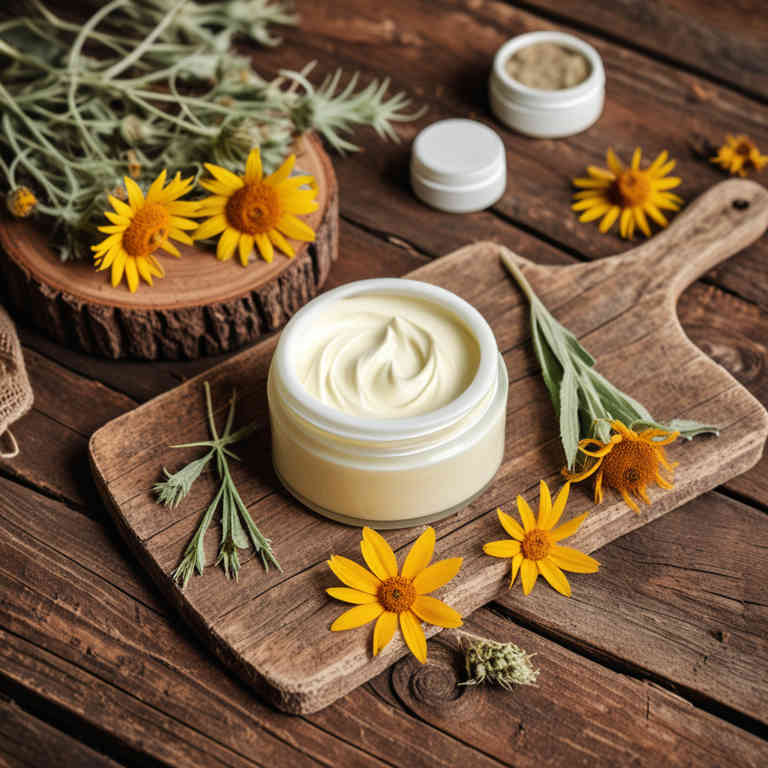Arnica montana cream for medicinal use

Arnica montana cream is a topical preparation made from the dried flowers of the Arnica montana plant, commonly used in herbal medicine.
It is known for its anti-inflammatory and analgesic properties, making it popular for treating muscle aches, bruises, and joint pain. The cream is typically applied to the skin to reduce swelling and promote healing. In herbalism, it is often used to support recovery from physical exertion or injury.
However, it should not be used on open wounds or by pregnant women due to potential toxicity.
Uses
Arnica montana cream has been used to treat various inflammatory and painful conditions for centuries.
Historically, it was used by the Swiss and other European populations for ailments such as bruises, sprains, and muscle pain. In traditional medicine, it was often applied topically to reduce swelling and promote healing. Modern uses include its application for muscle aches, arthritis, and post-injury recovery, though it is generally not recommended for use on broken skin.
Today, it is widely available as a natural remedy in both alternative and conventional healthcare settings.
Benefits
Arnica montana cream has health benefits such as reducing inflammation, alleviating muscle pain, and promoting healing of minor injuries.
It is commonly used to treat bruises, sprains, and other forms of soft tissue damage due to its anti-inflammatory properties. The active compounds in Arnica, such as helenalin and other sesquiterpene lactones, contribute to its effectiveness in reducing pain and swelling. It is often applied topically to the skin to provide relief from sore muscles and joint pain.
However, it should not be used on open wounds or by individuals with allergies to plants in the daisy family.
Constituents
Arnica montana cream active constituents include sesquiterpene lactones, flavonoids, and phenolic compounds.
These compounds are believed to contribute to the cream's anti-inflammatory and analgesic properties. Sesquiterpene lactones, such as helenalin, are thought to reduce inflammation and pain by inhibiting inflammatory mediators. Flavonoids may enhance the effectiveness of the active ingredients and provide additional antioxidant support.
This herbal preparation is commonly used topically to alleviate muscle soreness, bruises, and joint pain.
Preparation
To make Arnica montana cream, you will need Arnica montana root, a base of beeswax or a commercial cream base, and a carrier oil such as almond or coconut oil.
Begin by grinding the dried Arnica root into a fine powder. Next, mix the powder with the carrier oil and let it steep for several hours to extract the active compounds. After straining the mixture, combine it with the beeswax or cream base and heat gently until the wax melts.
Finally, pour the mixture into a clean container and allow it to cool and solidify before use.
Side Effects
Arnica montana cream may lead to skin irritation, redness, or a burning sensation, especially if applied to broken or sensitive skin.
It is commonly used to reduce inflammation and pain associated with bruises, sprains, and muscle soreness. However, some individuals may experience allergic reactions, including itching or hives. Prolonged use can cause contact dermatitis, and it should not be used on open wounds or near the eyes.
In rare cases, systemic absorption may lead to more severe side effects, such as gastrointestinal upset or cardiovascular issues.